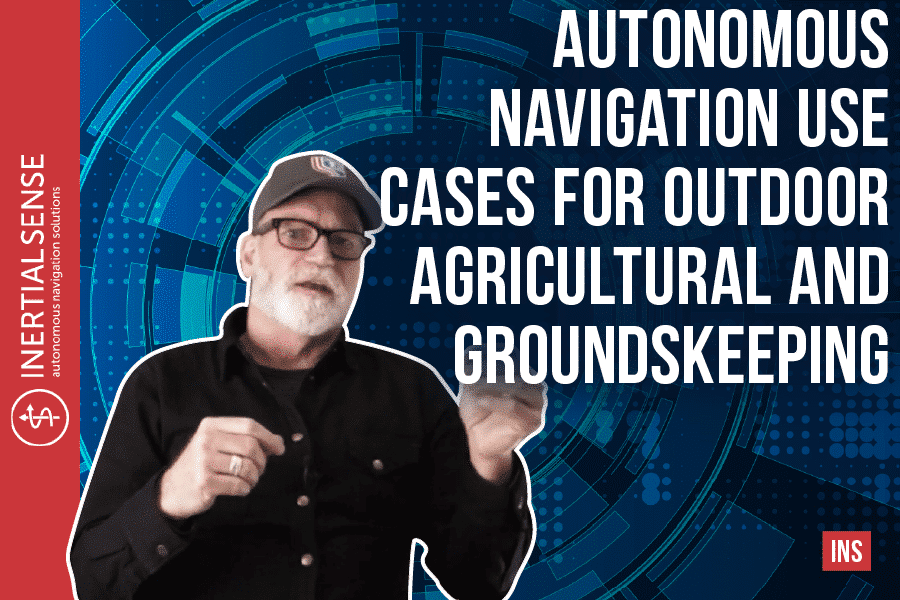
Autonomous Navigation Use Cases For Outdoor Agricultural and Groundskeeping
There are hundreds and thousands of autonomous markets. Where Inertial Sense thrives is with autonomous navigation use cases for outdoor agricultural and groundskeeping for your everyday needs. Watch the video below as Tom describes how autonomy can help drive up business and decrease costs.
Customers are looking for solutions to not only fulfill their immediate needs of a job to be done but cost-effectiveness as well.
A good example is commercial groundskeeping businesses. These companies do hundreds of millions, even billions of dollars in the commercial landscaping business. Labor can account for up to seventy-five percent of the business. Anything that helps drive down costs and/or expand the business using the same amount of vehicles is cost-effective.
What we do at Inertial Sense fits well with these calculations because we show versatility and many ways that we help in autonomous navigation use cases for outdoor agricultural and groundskeeping in which our products provide solutions and savings.
When the customer is thinking in terms of return of investment, terms of capital efficiency, and how autonomy can drive better a bottom-line performance for their company, Inertial Sense can step in and help guide the outcome.
Click here to connect with one of our savvy experts today, and find out more how we can help you and your business!
Learn More:
Autonomous Mobile Robotics – Indoor vs. Outdoor
The Best Sensors for Autonomous Navigation
What It Means To Be a Full-Stack Solution in Autonomous Robotics
Video Transcript
Where do we focus? Like I said before, autonomous mobile robotics is generally divided into two categories. You’re either doing something indoors or you’re doing something outdoors, and we’re focused on outdoors.
Now, in terms of outdoors, there’s a lot of things that we can do and a lot of markets that we could go after.
There’s mining, there’s security inspection, there’s military, all sanitation, all sorts of other markets. But where we’ve really focused is markets where we think there is a well-defined model that will benefit from autonomy. Whether there’s already a cost-effectiveness and a cost-savings calculation done in the customer’s mind, and they’re just looking for a solution to fulfill that.
If you look at something like commercial groundskeeping, there are companies that do hundreds of millions, even billions of dollars in the commercial landscaping business. Labor is seventy to seventy-five percent of what they do. Anything that they can do to drive down that cost or expand their business using the same amount of vehicles is a great win for them. You’re not going in and necessarily educating the customer on the need for autonomy. You’re educating them on why your solution is best.
We go into markets and customers where they’ve already got that mindset, and they’ve already sort of done the calculations in their head. And what we’re doing fits in really well with those calculations because we can very easily paint a picture for them where not having a human being standing on that large commercial mower for ninety percent of the time delivers them immediate cost savings.
Whether they’re looking at it from cost savings or I can use the same vehicles to do five times as many properties, it’s really kind of up to the customer to decide what that best scenario is for them. But they’re already thinking in terms of return of investment, already thinking about in terms of capital efficiency, and how autonomy can drive better bottom-line performance for their company.

